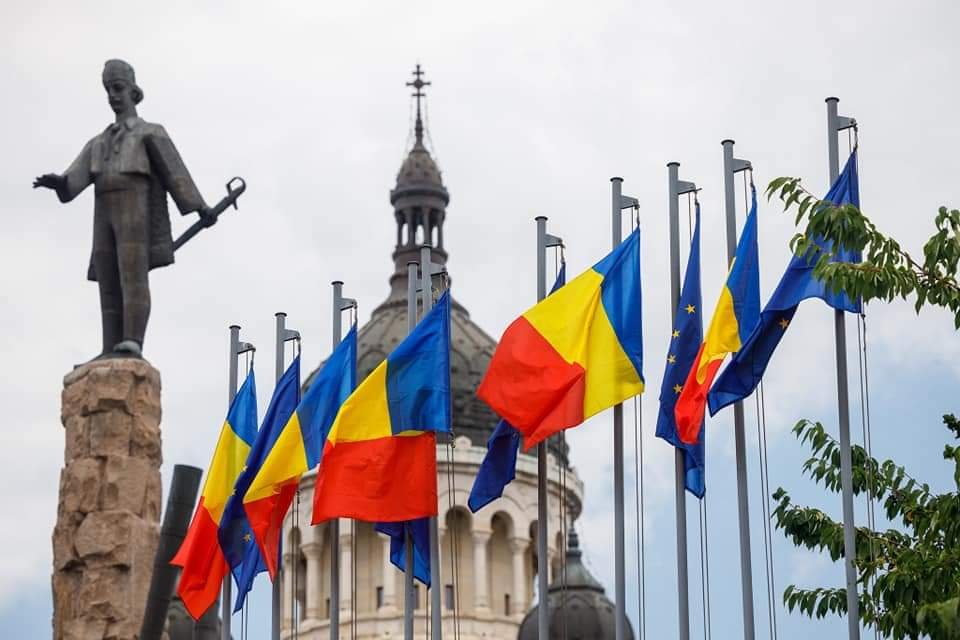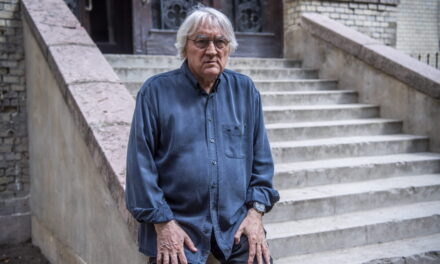When I saw the murderous terrorist acts committed by Hamas against the Israelis, I immediately thought of the anti-Hungarian massacres in Transylvania.
When I saw the murderous terrorist acts committed by Hamas against the Israelis, I immediately thought of the anti-Hungarian massacres in Transylvania. The massacres committed by the Romanians armed by the Austrians against the militarily defenseless Hungarian settlements in 1848-49. The Móc marauders set fire to dozens of Hungarian-inhabited settlements, destroyed them, broke into houses and beheaded the inhabitants. According to estimates, around eight thousand people were massacred simply because they were Hungarians. They thought that if there were no Hungarians left, the land would be theirs. It was not a regular force that faced the enemy force, but heated, stripped of their humanity, ready-to-do-anything armed men carried out a pogrom on innocent people.
The web of the past is always torn somewhere.
The same thing happened to the Hungarians in Transylvania 175 years ago, as it is happening now to the Israeli Jews. The difference between the two events is only in the quality of the weapons, human nature, blind hatred towards a people with a different identity, language and culture has not changed. There is nothing more base than killing defenseless people, today we say, unarmed civilians.
On the night of January 8, 1849, Nagyenyed (today Aiud, Romania), called the Athena of Transylvania due to its wealth, was attacked by nine thousand enraged Olachians with spears. There were four thousand unarmed people in the city, because the men who could go to war were fighting for Hungarian freedom somewhere far away in the ranks of the Hungarian army. Those who remained at home had already settled down when the attack took place. Alarmed by the sound of gunshots, they saw that their city was in flames. A terrible killing began, old men, women and children were killed there without mercy or indiscriminately. Who, as best he could, fled to the nearby forest, barefoot and in a pair of sandals during winter rains. Those who could not escape were stabbed by the attackers with their spears and beaten to death with sticks and axes. The babies were slammed against the wall by their legs so that their heads split open. The buildings of the city were all set on fire with rolls of straw. After midnight, more marauders arrived under the leadership of the nearby Greek-Catholic Romanian priest, and the next morning another mob of several thousand looters and robbers appeared. The precious library and archives of the Bethlen College were thrown onto the street so that there would be something to walk in the snow melting from the fire. The tombs were also broken into and looted. The valuables were collected in a large pile, and the Saxons also helped them in this. The roads leading to the city were flooded with carts loaded with stolen goods, driven animals, and people taken into captivity.
The series of pogroms actually began already in October, when Antal Puchner, the Habsburg-loyal commander-in-chief of the Transylvanian forces, who was born in the Highlands, refused to obey the Hungarian parliament and declared a state of siege, giving the Romanians a free hand. Like Nagyenyed, he also visited Gyulafehérvár, Zalatna, Magyarigen, Marosszentimre, Abdrudbánya and many other nearby Hungarian towns and villages. The destruction always took place based on a similar scenario: the Romanians first called on the population to surrender with threats, then with promises, and then killed them despite the concluded treaty and peace document. These treaties were concluded in the presence of Austrian Imperial officers. The Hungarians did not have armed forces in the cities, and their killings could not be explained by security considerations. There was an ordinary pogrom, ethnic cleansing, an attempt to annihilate the Hungarians.
In 1849, Károly Elekes, a Reformed pastor from Gyulafehérvár, visited the devastated sites and sought out the Hungarians who had fled to the forest. The whole diocese was already so depopulated by then that "there is no hope that there will ever be a Hungarian religious life here, especially of the Reformed faith," he wrote in his report. Hungarian churches and schools were razed to the ground, residential buildings were set on fire, pastors and teachers were killed by vandal attackers.
At that time, there was no mass media, the world was not informed about what happened. There were no anti-Romanian or anti-Hungarian or anti-Hungarian demonstrations in Europe, only fear and terror fell into the hands of the Austrians, who made them free prey in Transylvania. News of the massacres only reached the Hungarian Parliament in January 1849, and the Polish General Bem was commissioned. Not for revenge, but for the recovery of Transylvania and Hungarian freedom.
Little is known about all of this even today, the Romanian historiography does not mention these stains of shame. The leader of the free troops recruited from Romanian peasants, Avram Iancu, was a lawyer educated in Cluj, and today he is officially a national hero in Romania. His statue can be seen in almost every settlement of Transylvania, the main streets of the cities are named after him, and he has a real cult. However, what the Free Forces led by Avram Iancu (today we would call a terrorist organization) did in Transylvania was a real genocide: the deliberate and planned destruction of the Hungarian population.
The carnage is the fault of the Romanians, but the Habsburgs are responsible for the fact that it happened. The historiography dictated by the Habsburgs was also not in the interest of factual exploration of the events, since the extermination of Hungarians took place with their help and approval. They armed the Romanians, they gave them a free hand. The Romanians' series of anti-Hungarian pogroms began the day after Puchner's October proclamation and lasted until the middle of January, when General Bem appeared. According to the Hungarian point of view, the emperor-loyal Antal Puchner was a traitor, since he sabotaged the instructions of the legitimate Hungarian government from the beginning and openly sided with Vienna.
Vienna came up with an excellent tactic to defeat the Hungarian freedom struggle: they turned the nationalities living in the country, Serbs, Slovaks and Croats, against the Hungarians. In Transylvania, the Saxons and Romanians revolted, and then they were allowed to organize openly, create insurgent groups, and take up arms against the Hungarians. The Habsburgs applied to the Hungarians what they always used, the oppression of nationalities. This method was so successful that the uninformed public still considers the failed Hungarian nationality policy to be the cause of the downfall of the freedom struggle and Trianon. They do not know that in 1849 only the events of the war prevented the implementation of the world's first law containing nationality rights, but after this agreement, in 1868, the Hungarian legislature immediately replaced it.
Hungarian historiography did not summarize the events either. It was impossible to write about it until the agreement with the Habsburgs in 1867, after which perhaps these delicate points were avoided in the name of political reconciliation. Later, internationalist political correctness directly called all Transylvanians Romanian and completely brainwashed them. The Hungarian freedom struggle and the exploration of the true nationality policy (and many other things) are missing from school education. By doing so, we contribute to the fact that our history is written and rewritten by the loudest, the winners based on their own interests. However, nothing else should be done than to reach out to archival sources. There we would find, for example, Amália Török's majesty application dated 1852. "The enemy spared nothing," he wrote. "On my knees, I plead, whose father and two brothers were murdered by the Olahs without reason and whose mother died in Enyeden as a result of the brutal abuse of the Olahs, that your majesty please punish the murderers of my relatives after examining the facts."
After the suppression of the Hungarian freedom struggle, the Viennese court imprisoned Avram Iancu for a short time and then placed him under house arrest, but the perpetrators were not brought to justice and punished. The killers were never punished. Hungarians live in scattered places in the destroyed areas, 75 percent of the population of Nagyenyed, which was once considered color Hungarian, is Romanian, as is the case in the whole of Transylvania.
The author is a historian
Source: Magyar Hírlap
Cover photo: Avram Iancu Association












